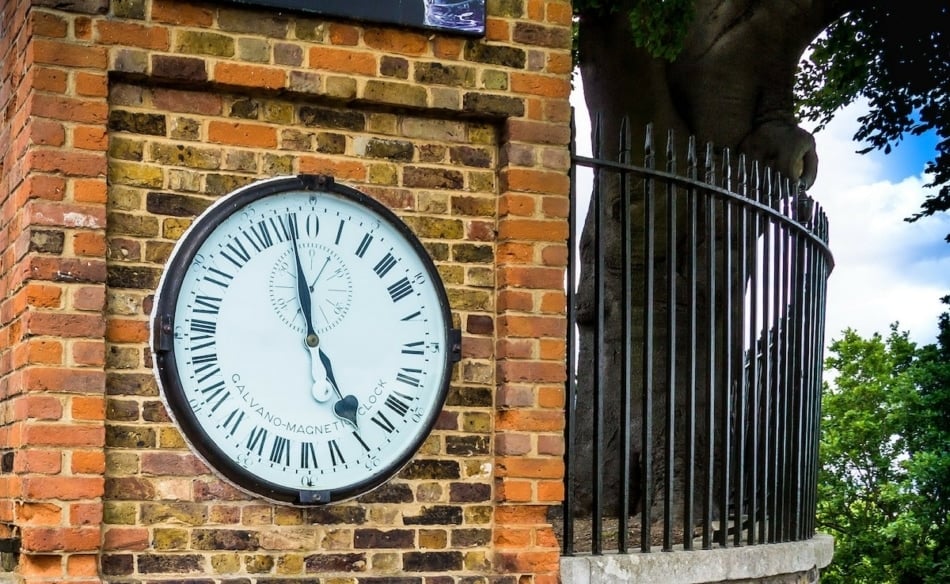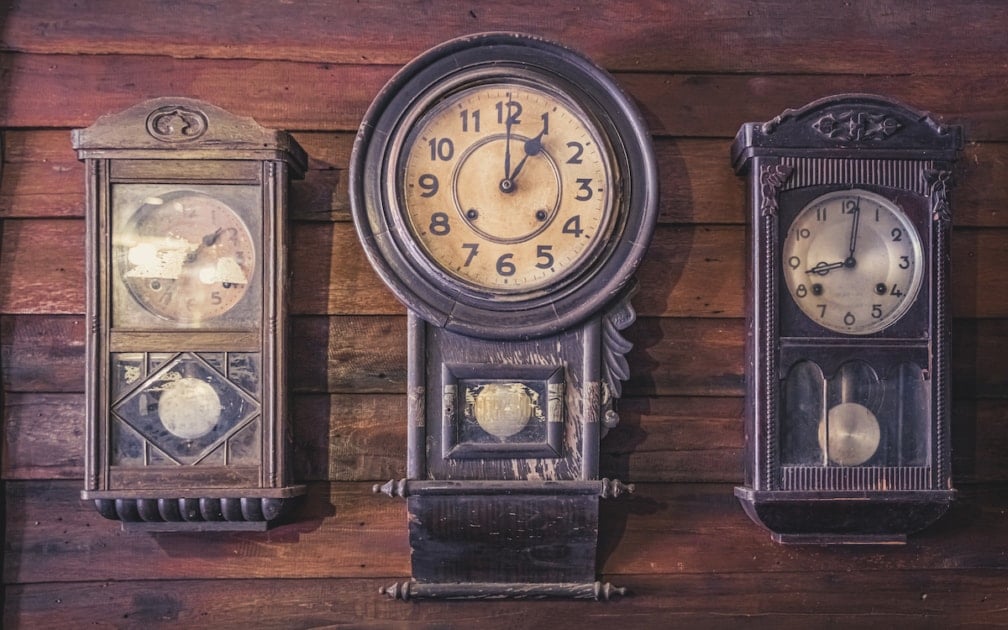You’ve heard of Daylight Saving Time, Standard Time, Eastern, Central, Mountain, and Pacific Time, but have you heard of the term Greenwich Mean Time, sometimes referred to simply as GMT, or Coordinated Universal Time (UTC), and wondered what the heck it is?
In essence, “mean time” is what you would read off of a clock. It differs from solar or astronomical time clock time because solar time varies throughout the year.
If you own a sundial for instance, you’re aware that “noon” based on the position of the Sun can differ by as much as plus or minus 15 minutes from what a clock may read.
But each day measured by a clock has the same length, equal to the average (mean) length of a solar day. It’s a way to standardize time so we can all know exactly what time it is for any location.
GMT was originally set up to aid naval navigation when travel around the globe started to open up with the exploration of the “New World” (America) during the 16th century. It wasn’t until the invention of the pendulum clock in the 1650s that it was possible to work out the relationship between mean (clock) time and solar time.
British astronomer, John Flamsteed came up with the formula for converting solar time to mean time, and published a set of conversion tables in the early 1670s.
But Why Greenwich?
Greenwich was a royal park and palace on a hill to the south of the River Thames east of London, England. In 1675, King Charles II offered the land to The Royal Society for Britain’s first national observatory.
Highly acclaimed British architect, Christopher Wren was commissioned to design the domed building. Soon after, John Flamsteed was appointed as the first Astronomer Royal and moved into the new Royal Observatory.
In 1767, the fifth Astronomer Royal, Nevil Maskelyne brought Greenwich Mean Time to a wider audience by introducing the Nautical Almanac as part of the great 18th-century quest to determine longitude.
British mariners started keeping at least one chronometer set to GMT. This meant they could calculate their longitude from the Greenwich meridian (also referred to as the “Prime meridian,” or longitude 0°).
These two solutions would help pave the way for GMT to become the worldwide time standard a little more than a century later.
The British Royal Observatory at Greenwich was considered the worldwide center for timekeeping and had been since 1675. Nevertheless, time, as shown by the clocks at the Royal Observatory, was not adopted officially by Parliament until August 2nd, 1880.

The United States Joins In
GMT was then adopted by the United States on November 18th, 1883. There were two main reasons for this:
The first was that we had already chosen Greenwich as the basis for our own national time zone system. The chosen moment was at noon on that day, when the telegraph lines transmitted time signals to all major cities. Prior to that, incredibly, there were over 300 local times in the United States. Very confusing to say the least!
The second was that in the late 19th century, 72% of the world’s commerce depended on sea charts, which used the 0° Prime meridian of Greenwich as the primary line of longitude.
On November 1st, 1884, GMT was adopted universally at the International Meridian Conference in Washington, DC. As a result, the International Date Line was drawn up and 24 time zones were also created.
Across the contiguous United States, there are four time zones, which are aligned with four “standard” meridians. Fifteen degrees of longitude is equal to one hour.
- Eastern Time Zone is at 75° west or five hours behind Greenwich. So at midnight GMT, Eastern Standard Time is five hours earlier or 7 p.m.
- Central Standard Time is at 90° west or six hours behind Greenwich.
- Mountain Standard Time is at 105° west or seven hours behind Greenwich.
- Pacific Standard Time is at 120° west or eight hours behind Greenwich.
Coordinated Universal Time
While Greenwich Mean Time is still used, in 1972, a new term was introduced: Coordinated Universal Time (UTC).
Although both GMT and UTC display the same time, there is a difference: GMT is now considered just a time zone officially used in some European and African countries.
But UTC is not a time zone, but rather the new time standard that is the basis for clock time and time zones worldwide. This means that no country or territory officially uses UTC as a local time.
Today we use atomic clocks for time keeping and they are exceedingly accurate, losing only one second over a time span of 15 billion years.
Due to the fact that the rotation of the Earth is currently slowing at a non-uniform rate, periodically we need to insert a “leap second” into the UTC time scale to help bring “Mother Earth” back into step with our atomic clocks.
The Time Ball
No doubt you have seen on New Year’s Eve the “Ball Drop” from the roof of One Times Square in New York, where a brightly lit ball descends 141 feet in 60 seconds down a specially designed flagpole.
The end of its descent marks the end of the old and the beginning of the New Year, and has been staged annually every year since 1907 (except during World War II in 1943 and 44).
But did you know that this unusual custom originated in the early 19th century in England?
A time ball is an obsolete time-signaling device. It consists of a large, painted wooden or metal ball that is dropped at a predetermined time, principally to enable navigators aboard ships offshore to verify the setting of their marine chronometers.
The first time ball was erected at Portsmouth, England, in 1829 by its inventor Robert Wauchope, a captain in the Royal Navy.
Another was installed in 1833 at the Greenwich Observatory in London by the Astronomer Royal, John Pond, and believe it or not that same time ball has dropped at 1 p.m. every day since then.


Being a shortwave radio enthusiast I also find the UTZ/GMT time tick on 5,10,15,20&25 kHz to determine the optimal listening frequency. Our military also uses gmt for notating all communications.
Thank you! I have seen this ball drop in movies & on tv and had no idea what or why it was.